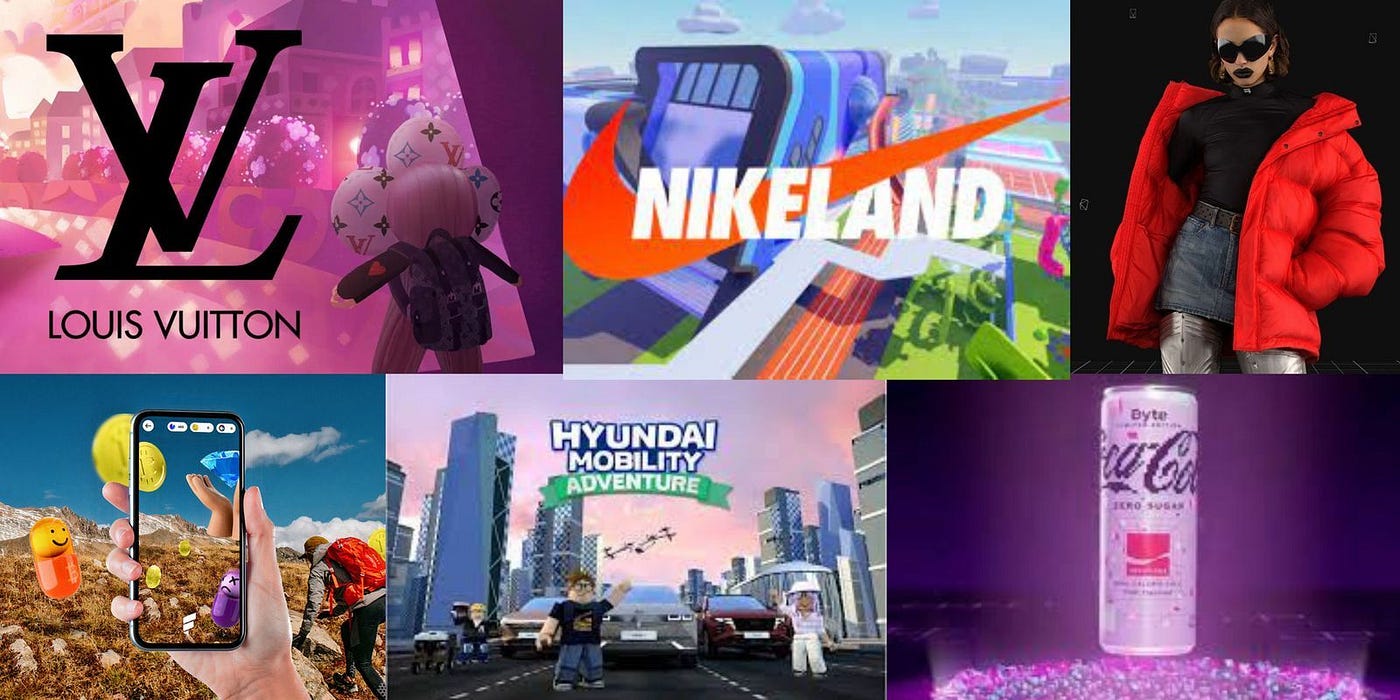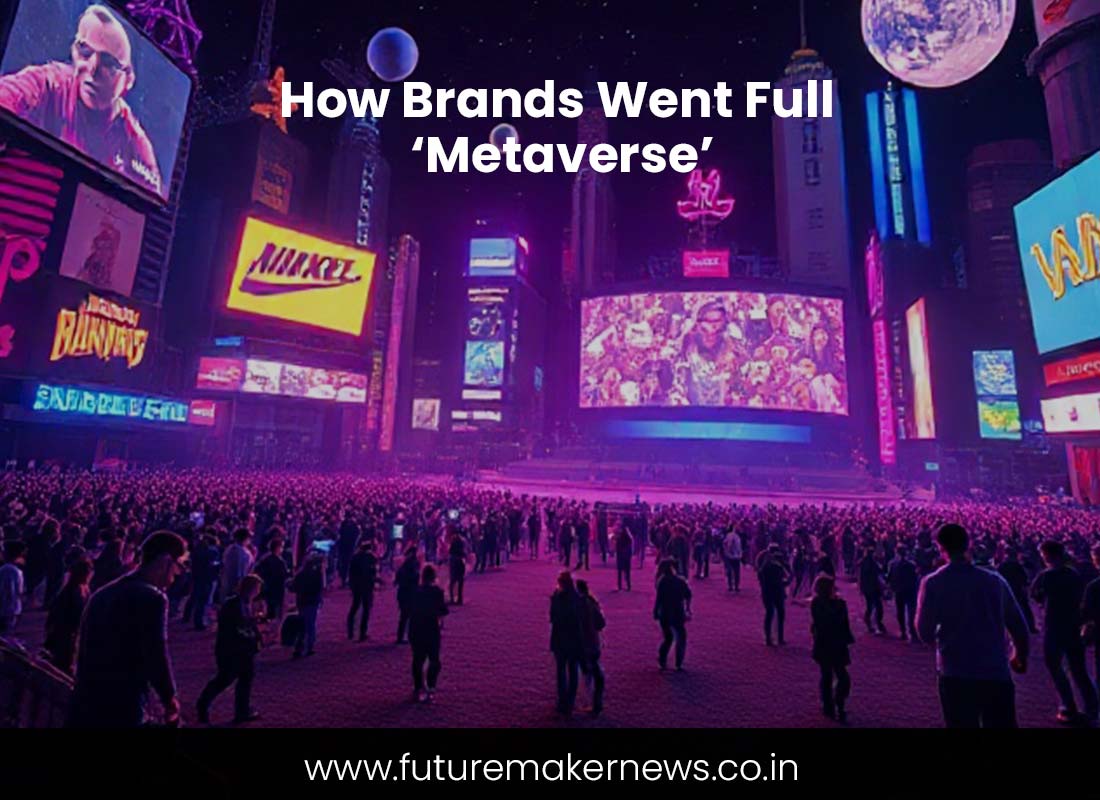Introduction: The Metaverse – A Digital Frontier
In the last few years, the metaverse has shifted from a niche, futuristic concept to a buzzing new space for businesses to explore. In essence, the metaverse is a virtual, immersive universe where people can interact with digital environments and each other using avatars. With major tech companies like Meta (formerly Facebook), Microsoft, and Nvidia investing billions of dollars into the concept, brands have been quick to hop on the metaverse bandwagon, hoping to tap into a whole new world of consumers.
However, while the potential for brands in the metaverse is vast, it hasn’t all been smooth sailing. Many brands have ventured into this space, only to learn the hard way that translating traditional marketing strategies into the metaverse isn’t always as straightforward as it seems.
In this post, we’ll explore how brands have experimented with the metaverse, what worked, what didn’t, and the lessons they learned along the way.
1. The Allure of the Metaverse: Why Brands Took the Leap

Before diving into the lessons learned, it’s important to understand why brands were so eager to jump into the metaverse in the first place. The concept promised to revolutionize digital marketing, offering immersive experiences, unique consumer engagement, and a completely new platform to create brand awareness.
The Promise of a New Audience
One of the key drivers behind brands entering the metaverse is the opportunity to engage with younger, more tech-savvy audiences. Millennials and Gen Z, in particular, are flocking to virtual spaces like Roblox, Fortnite, and Decentraland, where gaming, socializing, and shopping can all happen simultaneously. For brands targeting this demographic, the metaverse seemed like the perfect space to reach them.
Immersive Experiences
The metaverse offered brands the chance to move beyond traditional advertising and offer interactive experiences. Instead of simply showing an ad, brands could create experiences where consumers could virtually try on clothes, attend live events, play branded games, or even buy virtual goods to use in their digital lives.
The Future of Commerce
For forward-thinking companies, the metaverse represented a future model of commerce—virtual goods, NFTs (Non-Fungible Tokens), and blockchain-based assets could create new revenue streams. This opened the door for virtual economies, where customers could spend money on digital items that had value within the virtual world.
2. What Worked: Successful Metaverse Campaigns and Initiatives

While many brands had their missteps, others managed to leverage the metaverse to create successful campaigns that helped them grow their digital presence. Let’s take a look at a few examples of brands that got it right.
Gucci: Immersive Fashion in the Metaverse
Gucci made waves in the metaverse by launching the Gucci Garden in Roblox in 2021. This virtual experience allowed users to interact with a range of Gucci-branded virtual items, including clothes, accessories, and digital art. Gucci’s ability to merge fashion with gaming in an innovative way helped the brand tap into younger audiences who are increasingly engaged in digital worlds.
Key Takeaway: Leveraging virtual spaces to promote brand identity – Gucci understood that the metaverse is not just about selling products but creating a digital experience that resonates with the community.
Nike: Virtual Sneakers and Product Customization
Nike made a major push into the metaverse with its acquisition of RTFKT Studios, a company specializing in digital sneakers and NFTs. By launching virtual shoes in Fortnite, the brand allowed users to wear Nike gear within the game, blending fashion and gaming seamlessly. Nike’s virtual creations became hot commodities, highlighting the potential for brands to sell virtual assets as part of their broader business strategy.
Key Takeaway: Combining physical and virtual products – Nike’s approach of offering digital-only items alongside physical products is a solid strategy for capturing interest and creating brand exclusivity.
Coca-Cola: Creating Digital Collectibles
Coca-Cola entered the metaverse with a creative twist—launching limited-edition NFTs as part of their “Coca-Cola Creations” project. These digital collectibles were available for purchase in Decentraland and other virtual worlds, generating buzz and exclusivity among consumers. Coca-Cola’s ability to tie NFTs to its brand ethos of fun and collectibility helped position the brand as an innovator in the virtual space.
Key Takeaway: Building brand loyalty through digital collectibles – Coca-Cola used the concept of rarity and exclusivity in the metaverse to create a buzz, which translated into brand engagement.
3. What Didn’t Work: Missteps and Challenges for Brands

Not every brand has seen success in the metaverse. Some have faced backlash or failure due to poorly executed campaigns, lack of audience engagement, or not understanding the unique nature of the metaverse. Here are a few lessons from brands that missed the mark.
Facebook’s Meta Rebranding Fiasco
Meta’s rebrand in 2021 signaled its commitment to the metaverse, but the transition didn’t go as smoothly as expected. Facebook’s pivot to becoming a “metaverse-first” company alienated many of its users, as the brand was struggling with issues related to data privacy and misinformation. Its flagship metaverse platform, Horizon Worlds, faced criticism for its clunky design, lack of content, and technical issues.
Key Takeaway: Don’t rush innovation without considering execution – Meta’s move was too fast and failed to provide users with a polished and functional product. Brands must ensure they have the infrastructure and user experience to back up their metaverse ambitions.
Walmart’s Failed Virtual Store Experiment
Walmart attempted to replicate the traditional brick-and-mortar shopping experience in the metaverse by launching “Walmart Land” in Roblox. The virtual store featured products that customers could purchase, but the experience was criticized for being confusing and lacking real interactivity. Users felt it was more of a glorified ad than an immersive shopping experience, which turned many potential customers off.
Key Takeaway: Don’t copy-paste your existing business model into the metaverse – Simply trying to replicate real-world shopping in a virtual space without considering the nuances of the metaverse can lead to failure. It’s important to offer something unique and engaging.
Balenciaga’s Digital Clothing Fail
Luxury brand Balenciaga took its first steps into the metaverse by partnering with Fortnite for an in-game fashion collection. However, the response from players was less than enthusiastic. Many users didn’t understand why a high-end fashion brand would align itself with a video game, especially since the clothing didn’t offer much customization or utility within the game.
Key Takeaway: Brand alignment and audience understanding matter – Luxury brands need to carefully consider how their image fits within the metaverse. Simply creating virtual products without understanding the target audience’s desires can backfire.
4. What Brands Can Learn from Their Metaverse Mistakes

While the metaverse is still a developing space, brands can glean valuable lessons from the successes and failures of others.
Understand Your Audience
One of the most important things brands need to do before launching into the metaverse is to understand the digital behaviors of their target audience. The metaverse is not just another marketing platform; it’s a new environment with its own set of rules, cultures, and values. Engaging with users on their terms, rather than trying to force traditional marketing strategies, is crucial.
Create Meaningful, Immersive Experiences
The key to success in the metaverse is to create experiences rather than just advertisements. Whether it’s through virtual events, games, or digital product launches, the metaverse is about creating engaging, memorable moments that resonate with users.
Stay Authentic to Your Brand
It’s important for brands to stay true to their values and aesthetics when entering the metaverse. Whether you’re a fashion brand or a tech company, your digital presence should align with your core identity. Forced or out-of-place virtual products will not resonate with users and may harm your brand image.
Invest in High-Quality Technology
One of the main reasons some metaverse campaigns failed was due to technical difficulties. Whether it’s clunky avatars, slow load times, or poor design, a poor user experience can easily lead to disappointment. Brands must invest in top-tier technology and hire digital experts who can craft immersive, seamless experiences for their users.
5. The Future of Brands in the Metaverse

The metaverse is still evolving, but its potential to transform digital marketing is undeniable. As more brands experiment with this new space, we’re likely to see new opportunities and innovations emerge.
For brands, the key takeaway is simple: be patient, stay authentic, and invest in quality experiences. While the metaverse may be uncharted territory for many, those who understand its nuances and focus on creating meaningful engagement will have a much better chance at success.
In the coming years, as virtual worlds become more interconnected and sophisticated, the role of brands in the metaverse will continue to grow. It’s up to businesses to ensure they don’t just participate in the digital revolution but help shape it.
Conclusion: Navigating the Metaverse with Caution and Creativity
While the metaverse presents exciting opportunities for brands, it’s clear that success in this new space requires more than just following the hype. Brands must be thoughtful, creative, and patient as they navigate this evolving digital landscape. By learning from both their own experiences and the mistakes of others, they can create lasting, meaningful connections with their audiences in the metaverse and beyond.

